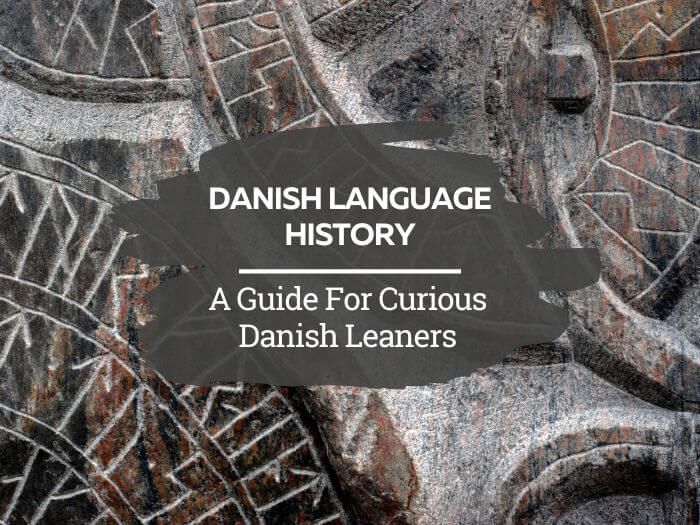When you learn Danish (or other languages), you realise that language is not a static thing.
It’s constantly evolving, reflecting what goes on around us, what we focus on, and what we feel the need to talk about. New words are incorporated or invented, while others fade into oblivion.
This post will take you on the journey of Danish language history, from the days of yore to the version you’re likely to hear today.
Don’t worry, it won’t be a dusty history lesson, just a few highlights that might be useful to the modern Danish learner. It can never hurt to know from whence your new language came!
Pro Tip
By the way, if you want to learn Danish by reading, my top recommendation is Danish Uncovered which teaches you through StoryLearning®.
With Danish Uncovered you’ll use my unique StoryLearning® method to learn Danish through story…not rules. It’s as fun as it is effective. If you’re ready to get started, click here for a 7-day FREE trial.
If you want, you can skip to the part of Danish language history that interests you the most using the table of contents below. Otherwise, keep scrolling to find out the full history of the Danish language.
Table of Contents
Proto-Norse, The Golden Horns And Old Norse
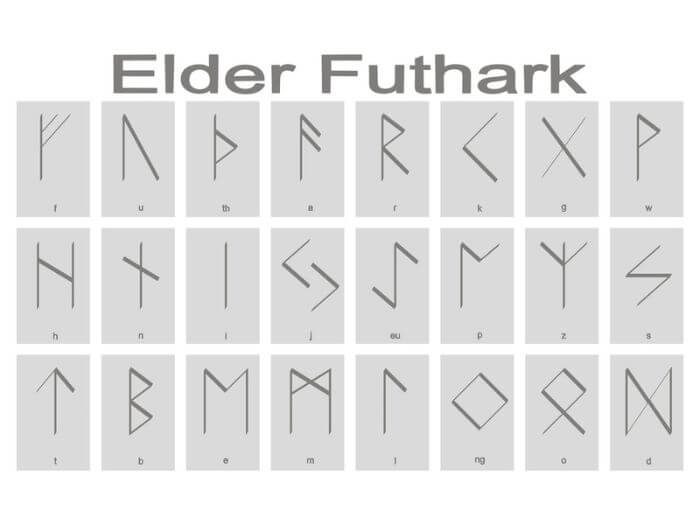
Even before old Norse, there existed what is today known as Proto-Norse, or Proto-North Germanic. This was spoken here in Scandinavia in the earliest centuries CE, and is an Indo-European dialect.
Now, we don’t have tape recordings, MP3 files or even books, so how it sounded is really a bit of a haze. All we really have to rely on are runic inscriptions, in the alphabet known as the elder futhark.
The most famous example of these, at least in Denmark, are found on the Golden Horns, which were discovered in Southern Jutland in 1639 and in 1734, respectively.
Not only do they represent one of the earliest known inscriptions in elder futhark, as they date back to early 5th century, they are also very much a national treasure.
Whether they were used for gulping down mead (an old, sweet form of beer), or for blowing is not known.
The horns bear the inscription, translated from runes: “I Hlewagastiz Holtijaz made the horn”, along with various images. Which is rather typical of the sparse messages left at this time.
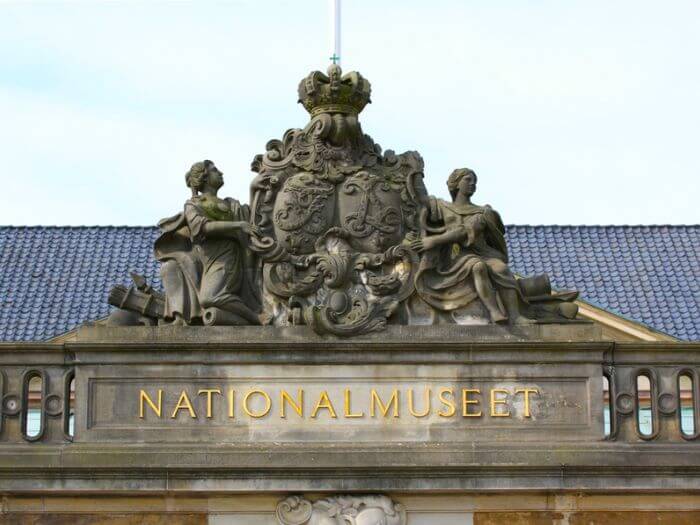
The Golden Horns were stolen, then melted, presumably to be sold as gold. However, replicas are on display at the Danish National Museum.
One of the most famous poems in Danish is called ”Guldhornene” – ”The Golden Horns”. This was written by Adam Oehlenschläger (who also wrote the lyrics for the Danish nation anthem) in 1802. And yes, that is quite a name to carry with you!
Please forgive me for my digression, but this romantic poet has a street named after him, Oehlenschlägergade, in central Copenhagen, in what is traditionally one of the rougher parts of the city.
I am informed, that when police caught a wrongdoer in this street, they would often drag the culprit to nearby Saxogade (also named after a writer) to make the arrest, as this would make the writing of their report so much easier.
Old Norse
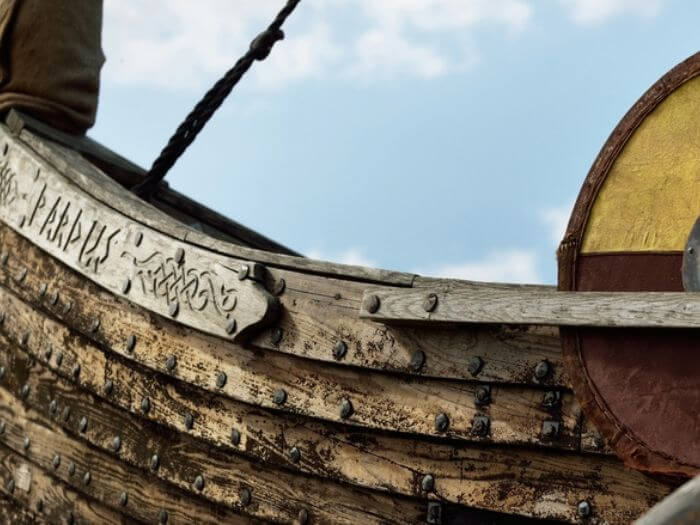
Let's get back on track with Danish language history. After centuries, this Proto-Norse evolved into Old Norse, which linguists established happened around 800 CE, coinciding with the famous viking age.
A distinction between Faroese, Icelandic, Norwegian, Danish, and Swedish begin to appear. Given the many interactions, hostile or friendly, between the groups, these differences have been larger or smaller at given times, throughout history.
But around 800 CE, these languages began subtle, but noticeable separations in vowel pronunciation, and partly in syntax.
Scholars believe, that from around this time in Danish language history, we can speak of Ancient Danish (though shared as Old Norse with the rest of Scandinavia), consisting of around 5000 inherited words.
Added to those were loanwords, some of which are intriguingly connected. As an example, the Danish købe (to buy) is derived from German kaufen, which in turn is derived from the Latin caupo, a noun meaning merchant.
And it’s the same word from which we get the English ”cheap”, originating in the phrase ”good cheap”, meaning ”good buy”.
Christianity
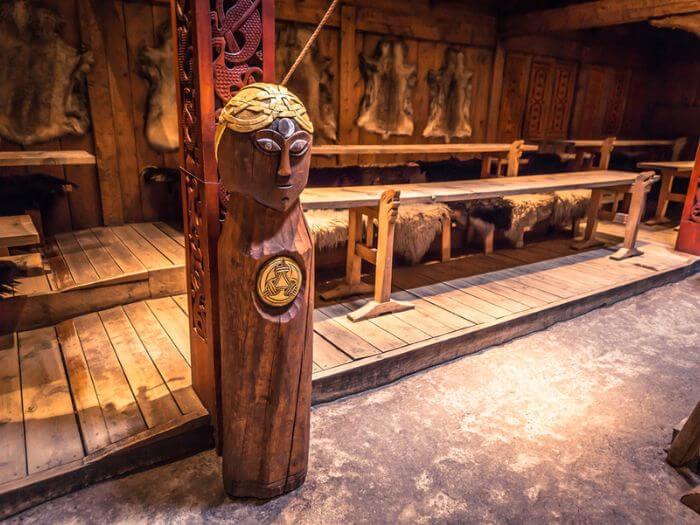
Of course, during viking times, many new words were added with the introduction of Christianity.
Both English and German missionaries may have had a hard time christening the Danes, who seemed quite satisfied with their Nordic Gods, but eventually succeeded.
As most of Europe at this time had become Christian, pressure to convert in order to do trade was increased. Many of the new words associated with this change followed a familiar pattern.
A word like bisp or biskop ( English ”bishop”) was loaned from German Bischof, who took it from Latin episcopus, which in turn was taken from Greek episkopos, which meant something along the lines of supervisor.
Old Danish, Medieval Times
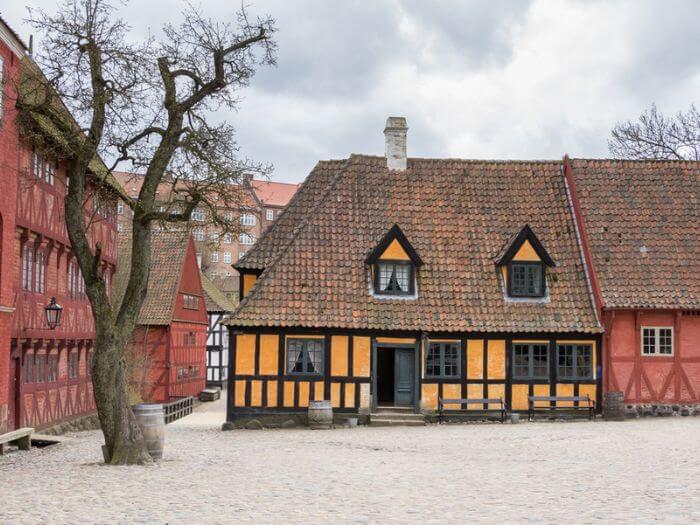
However, the most important thing that came with Christianity in Danish language history was the use of the Latin alphabet.
This opened up a gate to new possibilities of how language could be established and defined, and what communication could be used for. This is at the same time as the contours of the Danish nation state as we know it started to appear.
Denmark was significantly larger then though, including the Swedish regions of Skåne, Halland, and Blekinge, as well as parts of modern-day Germany, down to the river Eider in the south, hence why part of Germany is included in this list of Danish-speaking countries.
During medieval times, the Nordic countries experienced a larger degree of distinction, not least in the movement within vowel pronunciations.
For example the ”th” sound diminished hugely in spoken Danish, ”thing” became ”ting”. In addition, the three genders for nouns that existed before were reduced to two, as feminine and masculine melted together as the common gender, being used alongside neuter.
This is still what determines the article in Danish, whether it should be en (common gender), or et (neuter). As an English speaker, it can be tough to know which one to use. It's not easy to set up a rule of thumb for this, yet to a Dane it seems to come naturally.
If you're trying to learn Danish, don’t let the grammar villain get to you though; you will be understood anyway, and a mistake might even be considered charming! Also, there are parts of Jutland where neuter is hardly ever used.
It's important to note, that by then, Denmark’s by far most important partner in trade was Germany, at that time a collection of duchies. This means that to this day, the German language, and culture in general, has had the biggest influence on Danish language history.
Many words were imported from both upper and lower German in this age. Some of these dealt with life in the city, like borger (citizen) and handel (trade).
Others were about crafts, such as skomager (shoemaker) and snedker (carpenter), or dealt with conflict, like fane, krig and krudt, (banner, war, and gun-powder).
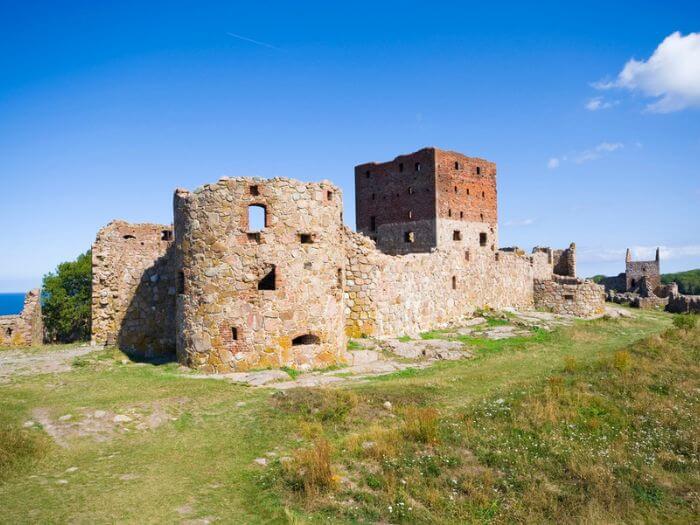
New Danish – After the Middle Ages
Around the time of the Lutheran Reformation at the start of the 16th century, scholars generally agree that the Danish language had established itself in a fixed form, that it's still based on today.
This goes for Danish pronunciation as well as syntax. Of course, this doesn’t mean that the language of the time would seem clear and natural to the modern Dane, far from it.
The spelling and the way verbs, adjectives, and nouns were marked differed greatly from what is used today.
From towards the end of the 17th century, French gained popularity within the upper circles of society.
French language and culture, not least in cuisine and fashion, was associated with refinement and prestige. So, the nobility spoke French, and the tendency trickled down over time.
Pretentious, moi? I certainly hope not, but I would like to illustrate this new hierarchy of languages with a small excerpt from a poem.
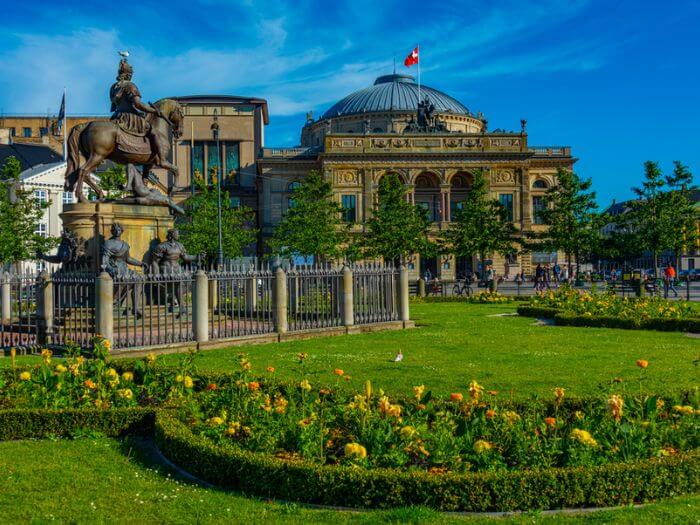
It was written by the little known writer Christian Wilter in 1827 in a tribute poem to the much more famous 18th century writer and playwright Ludwig Holberg – whose statue can be seen outside the Royal Theatre in Copenhagen.
Hver Mand, som med Kløgt gik i Lærdom til Bund,
Latin paa Papiret kun malte,
Med Fruerne Fransk, og Tydsk med sin Hund,
Og Dansk med sin Tjener han talte.
And in my clumsy translation:
Each man who cleverly with wisdom went down,
Only Latin on paper he wrote,
With ladies in French, in German with his hound,
And Danish with his servant he spoke.
It should be noted here, that the verse above describes the environment that surrounded Holberg, not the poet himself, who vehemently opposed such perceived snobbery – a recurring theme in his writings.
Also, the advanced Danish learner will notice that nouns were still capitalised at this time, and the ”Å” was still represented by a double ”A”.
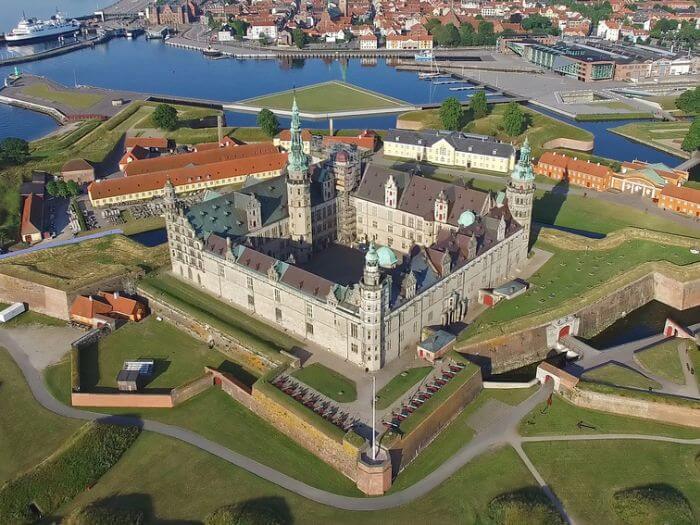
Recent Times – Modern Danish
Recent, of course, is a relative concept. In Danish language history though, from the end of the 19th century and up till today, another language has influenced Danish more than any other. You guessed it, it’s English.
This wave has been accentuated by the two world wars, that certainly made the English-speaking world gain favour with the Danes. This was much at the expense of German, as anything vaguely resembling German for many years was frowned upon by many Danes.
It’s fair to say that five years of occupation lead to a deep animosity against Germany in the common Danish psyche.
At the same time, a very powerful American youth culture broke through. So the Danes imported terms like popcorn, hotdogs, milkshakes, test, show, lighter, okay, cornflakes, and image from America.
Rock’n’roll, jeans, hamburgers, and Elvis Presley became a way of teenage rebellion, making an impact on both the cityscape and the language.
This change was profound. Even when America engaged in the hugely unpopular Vietnam war, Danish left-wing counterculture, traditionally sceptic of conservative America, mirrored their American ”brothers in arms”.
This time though, it was with long hair, slogans like ”flower power”, ”make love, not war”, and music by Bob Dylan.
Through globalisation, popular culture and the language of internet and gaming, this development continues to this day.
Sometimes, Danish words are invented to try to counteract the English influence, like datamat instead of ”computer”, but they rarely succeed. This is unlike places like Norway and Iceland, where an effort is made to come up with words that are built from inherited words.
Hailed by some as natural progress, decried by others as erosion of a language, teens in Denmark today will often find you ”nice” or ”cool”, unless you are a ”retard”, who is ”cringe” enough to speak traditional Danish, for which they have no ”f***ing craving”.
This change in vocabulary, alongside an even less distinct pronunciation are probably the hallmarks of Danish today.
This could be interpreted as a smart willingness to adapt to a language that seems to be the passport to an increasing number of opportunities, countries and regions in the world.
Or as the result of an inferiority complex resulting from being a smaller, agricultural language. It may not be the sob-story it could sound like.
As you've seen, Danish has, through the ages, always been flooded with words from other languages. Occasionally, even unexpected ones, like kajak from Greenlandic, sauna from Finnish, risiko (risk) from Italian, or kimono from Japanese.
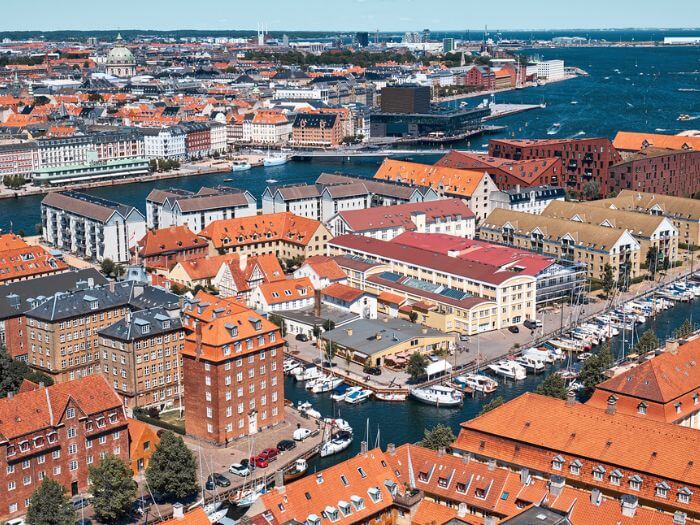
FAQs About Danish Language History
What is the origin of the Danish language?
Danish has its origins in Proto-Norse, or Proto-North Germanic, which was spoken in Scandinavia in the earliest centuries CE. Proto-Norse evolved into Old Norse, which linguists established happened around 800 CE, coinciding with the famous viking age.
What language is Danish most closely related to?
Written Danish is most closely related to Norwegian, specifically the Bokmål variety. Swedish is also closely related to Danish. Danish, Swedish and Norwegian are considered mutually intelligible, especially in writing.
Is Danish Nordic or Germanic?
Danish is a Germanic language that's part of the North Germanic group along with Swedish, Norwegian, Faroese and Icelandic.
Who are the Danish descended from?
Danish people are primarily descended from the Germanic tribes that inhabited Scandinavia during ancient times, with the most direct ancestors being the Danes, a North Germanic tribe that settled in what is now Denmark during the early Middle Ages.
Is Danish a Latin language?
No, Danish is a Germanic language, not a Latin language. Danish is part of the North Germanic group of languages. It uses the Latin alphabet though. Although Danish has borrowed some vocabulary from Latin, its structure and origins are Germanic.
Danish Language History: Looking Ahead
Danish is very much alive. Some changes are just fads, and some remain. Like, during the last 30 years, the preposition på (on) has gathered so much room, that you can even listen ”on” a record, be the director ”on” a film and so on.
Plus, it's now more common to hear kommentere på rather than just kommentere (comment on/ comment) in Danish, though it is indeed a transitive verb, that really has no need for “on”.
So, indeed like your own mother tongue, Danish will continue to develop. Where exactly it's going is unknown, because there are a lot of variables. But knowing where it came from is always a benefit – hence this story of Danish language history that I've just shared with you.
And learning Danish by reading books in Danish or short stories in Danish will always be a fun and effective way to learn it!

Olly Richards
Creator of the StoryLearning® Method
Olly Richards is a renowned polyglot and language learning expert with over 15 years of experience teaching millions through his innovative StoryLearning® method. He is the creator of StoryLearning, one of the world's largest language learning blogs with 500,000+ monthly readers.
Olly has authored 30+ language learning books and courses, including the bestselling "Short Stories" series published by Teach Yourself.
When not developing new teaching methods, Richards practices what he preaches—he speaks 8 languages fluently and continues learning new ones through his own methodology.
